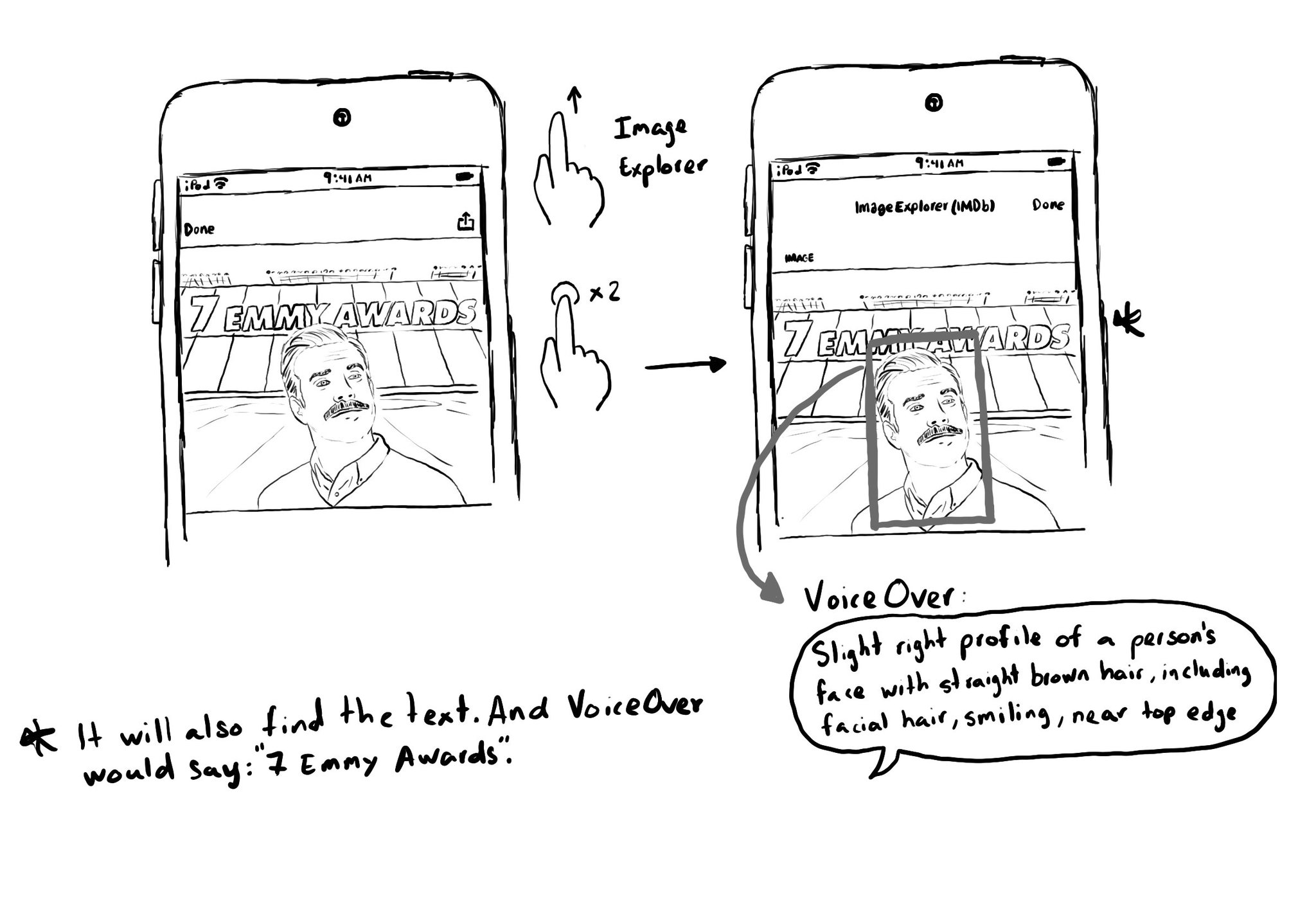Images that convey important information should have the .image accessibility trait and provide an alternative text in the accessibility label. "Image" will be added to VoiceOver's utterance and the user will be able to use Image Explorer.

Image Explorer is fairly new, introduced just a couple years ago. But if you were appropriately configuring the image trait, users suddenly got this new functionality for free. Isn't that awesome?
With VoiceOver on, open Image Explorer by swiping up in an image and double tapping. It lets users find people (with a basic description and positioning in the photo), objects or text in images, using on-device intelligence. It is very cool!
You may also find interesting...
Do you have a fancy custom loading animation instead of an UIActivityIndicatorView? You may want to check if it has an accessibility label so a VoiceOver user knows that something is happening. Something like "In progress" or "Loading" could work.
Accessibility labels should not contain the type of the control, that's a job for the accessibility trait instead. If you have a button with a label like "Close button" and the ".button" trait, VoiceOver will say: "Close button, button".
Check isReduceTransparencyEnabled to lower transparency. A great example is Spotlight. Not only transparency is removed but it keeps the main color of the background, it feels personalized and contextual but reduces noise and improves contrast.